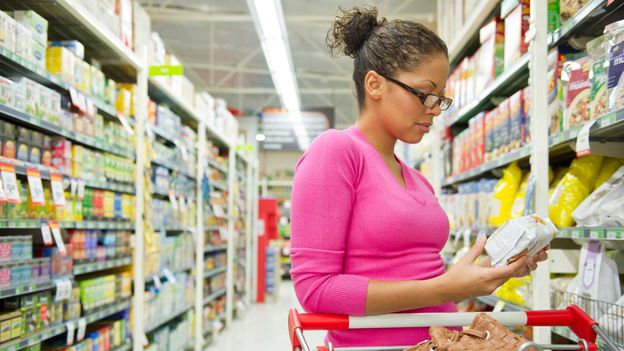
Lower down the ingredient list, you'll also come across names that are less recognisable than oats, sugar or nuts. In the EU, manufacturers use a system of short codes to describe additives called "E numbers", which over the years have acquired a controversial – and occasionally undeserved – reputation as dangerous and mysterious chemicals. A few, like the artificial colour E122 in cakes and sweets, may have adverse effects on children prone to hyperactivity. But others are good for you, or at least harmless: E300 is vitamin C, E948 is oxygen and E160c is paprika.
In the US, there is no such coding, and such additives are described with their chemical name. So, on a US label you'd read "sodium caseinate", rather than "E469". On the surface, that would seem clearer, but even that convention is a little obtuse about what the stuff actually is: sodium caseinate is used in foods like sausages or bread, and is the main ingredient in coffee creamer, but neither its E number nor its chemical name would tell you that it's a protein derived from milk.
Another sodium-based difference between countries to be aware of is that the US lists sodium levels on its products (specifically its nutritional labels, which we'll cover next), whereas the EU lists salt. Salt may be a type of sodium, but sodium is a category that also includes the caseinate additive we just mentioned, as well as other ingredients like bicarbonate of soda.
Nutrition facts
As your eye roves around a processed food packet, you will probably also come across some form of nutritional information too.
Some nations, like the UK, have a traffic light system for nutrition that expresses how healthy a processed food is in terms of fat, saturates, sugars and salt, using the colours red, amber and green. For example, a processed oven meal might have 7.7g of saturated fat, and so be labelled red. In some (but not all) cases, it also comes with a percentage, in this case 39%. The colour scheme was designed to be intuitively easy to understand, but how the percentages are worked out may not be immediately obvious. The 39% in that meal is calculated using the "Reference Intake", which is the maximum recommended amount. In Europe, this value has gradually been replacing "Guideline Daily Amounts" (GDA) on labelling, which differed by gender and age.
June 24, 2021 at 07:02AM
https://ift.tt/3vUXOg6
How to decode a food label - BBC News
https://ift.tt/3fbzbE8
Bagikan Berita Ini

















0 Response to "How to decode a food label - BBC News"
Post a Comment